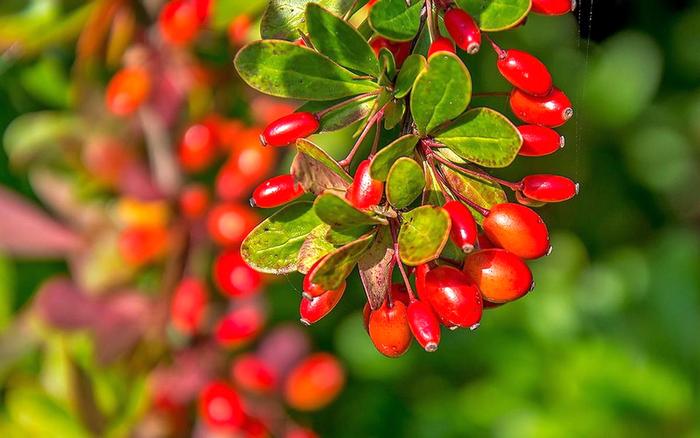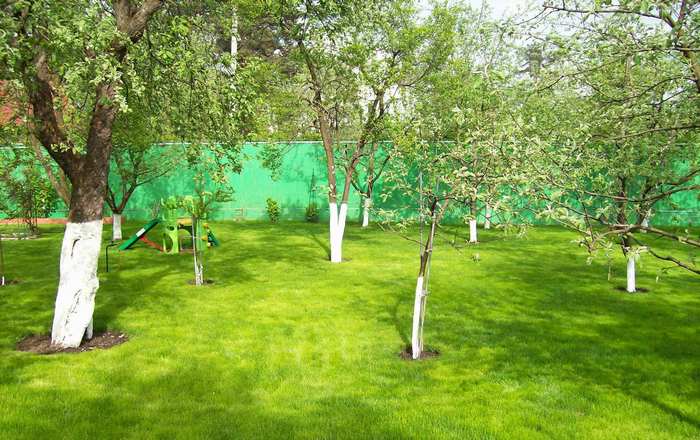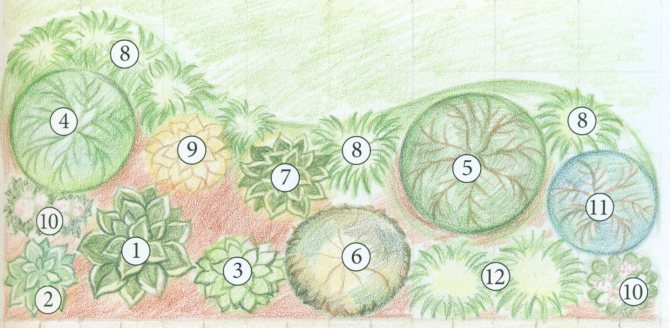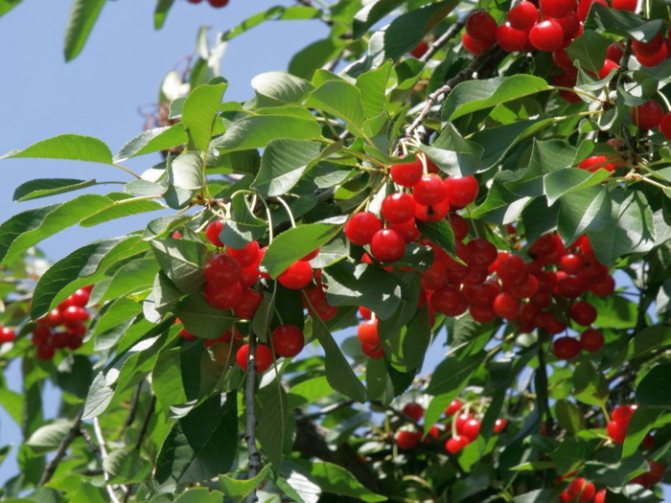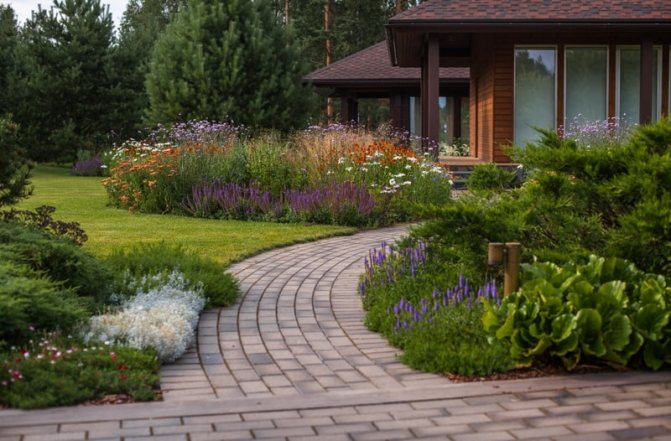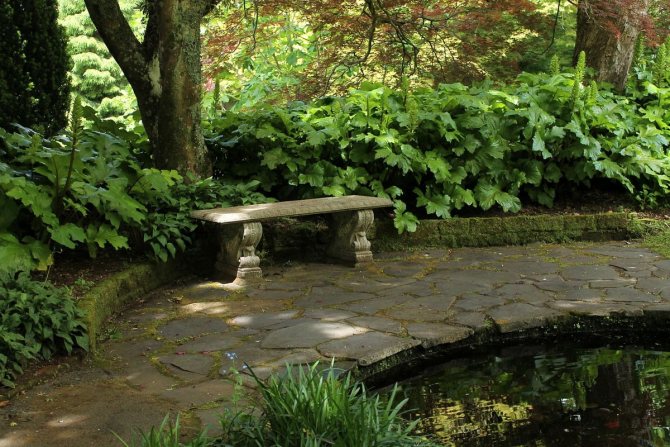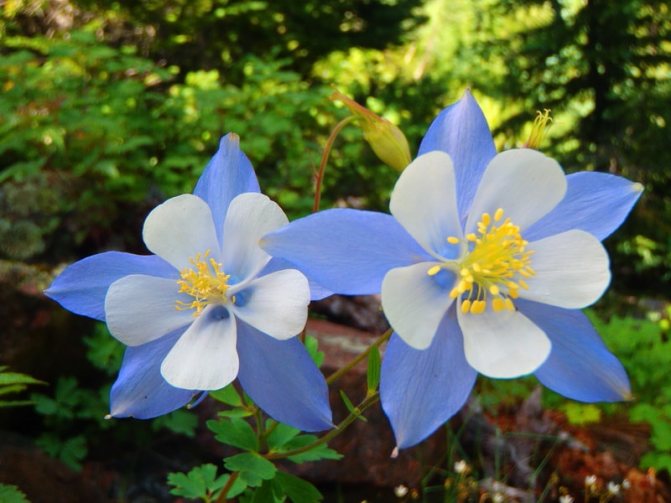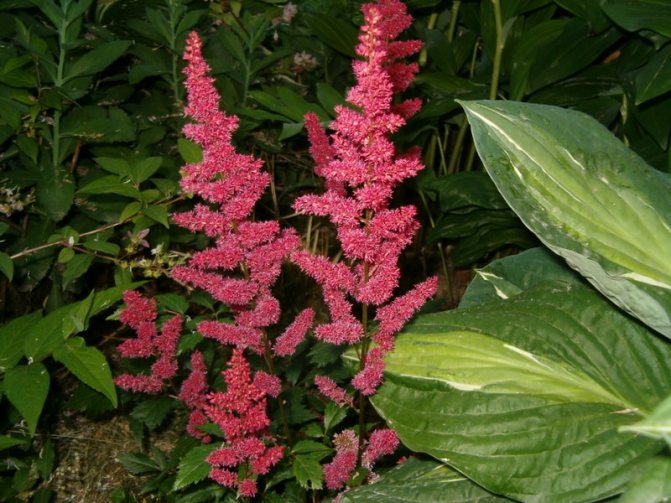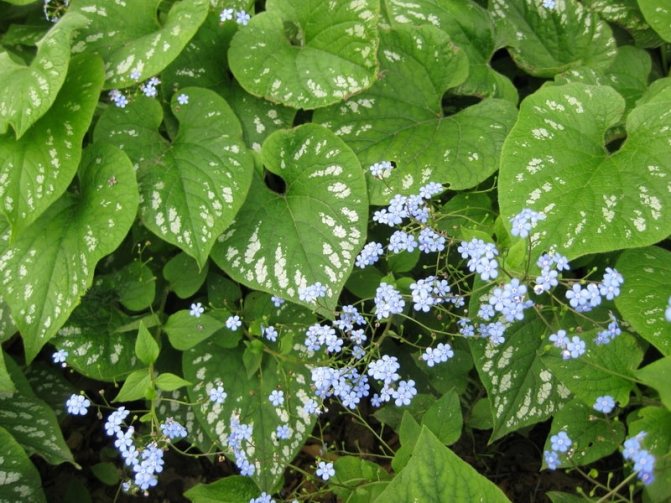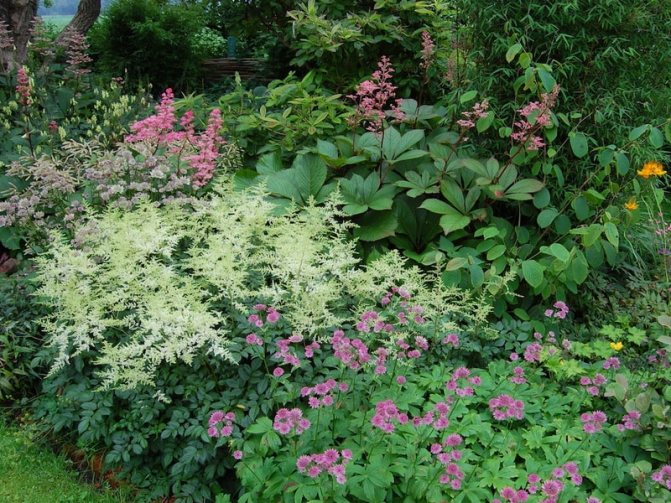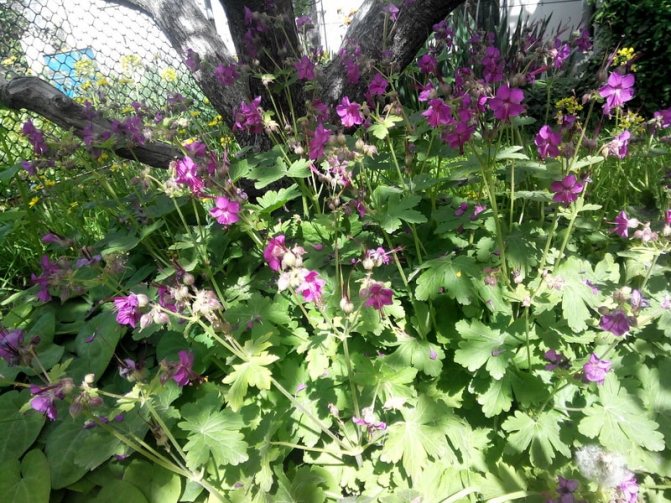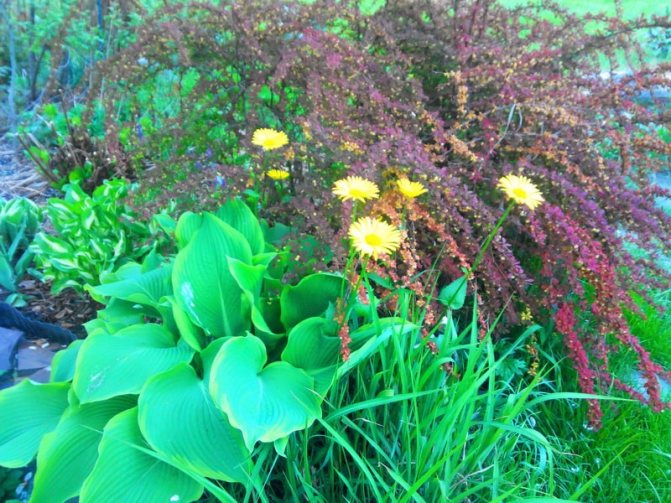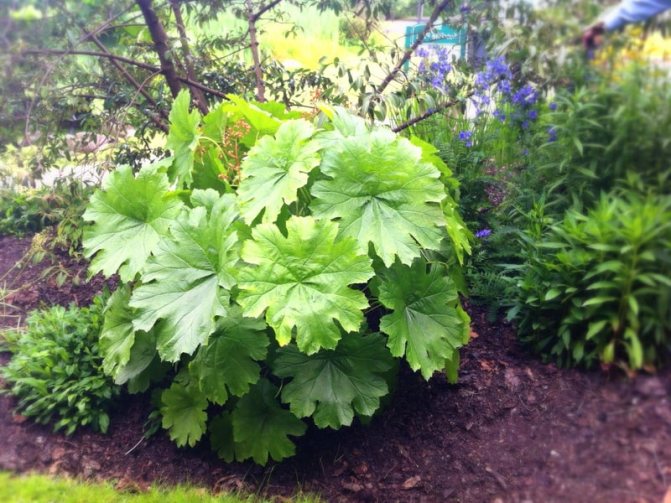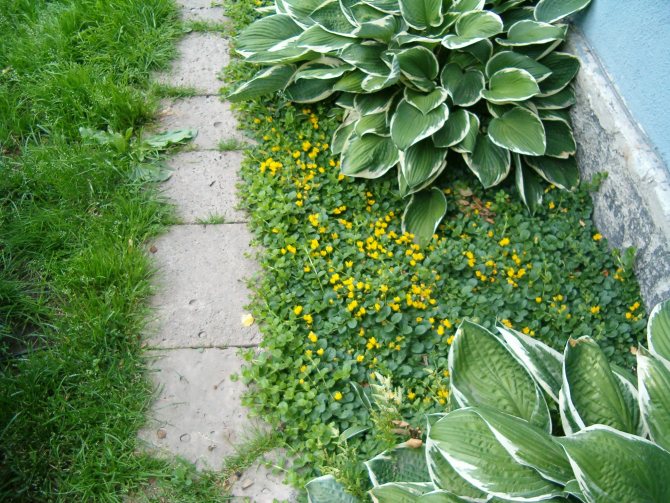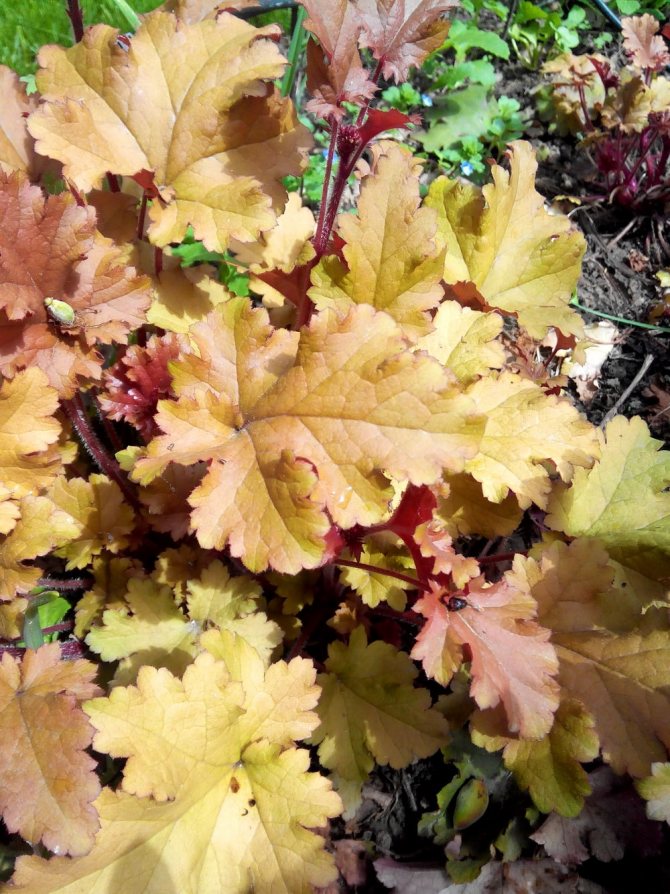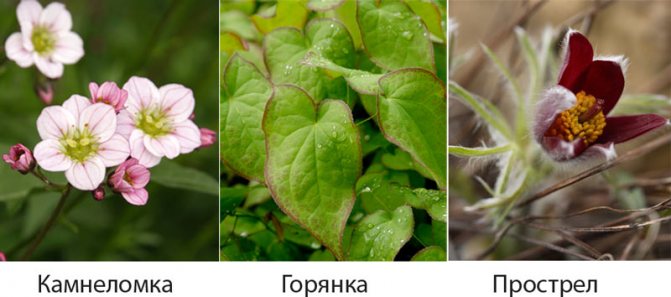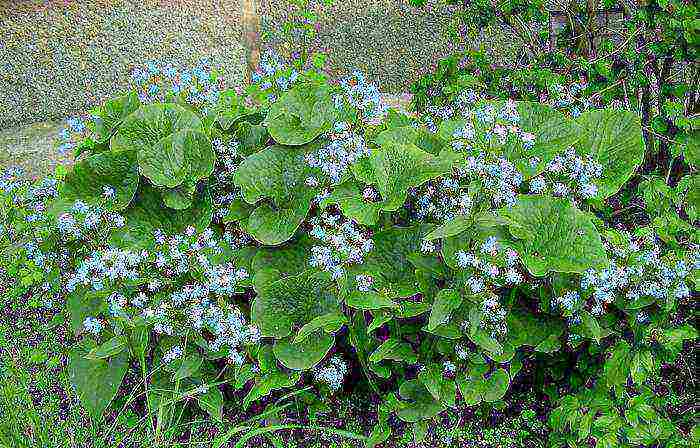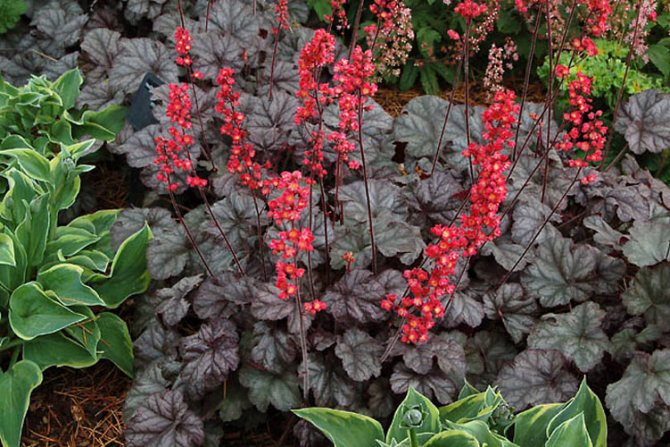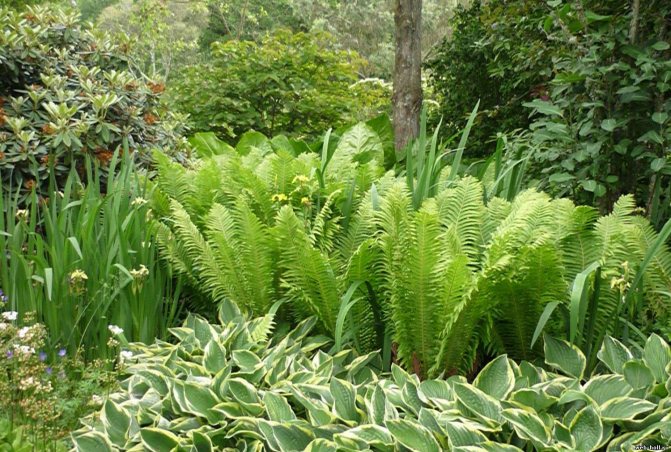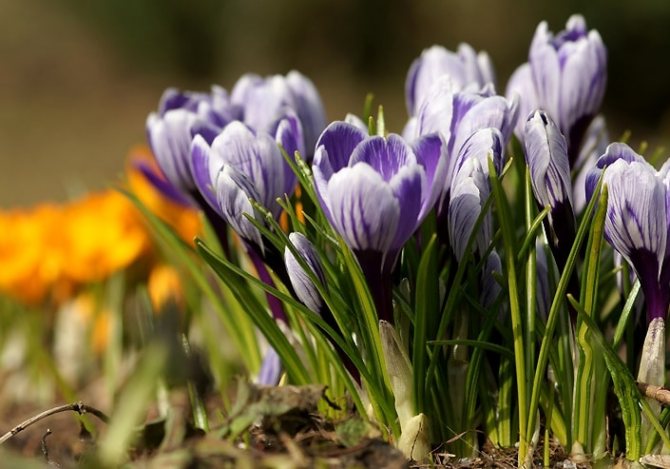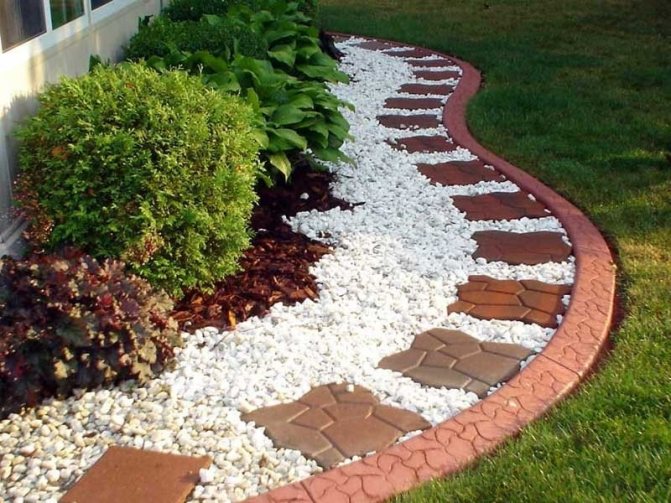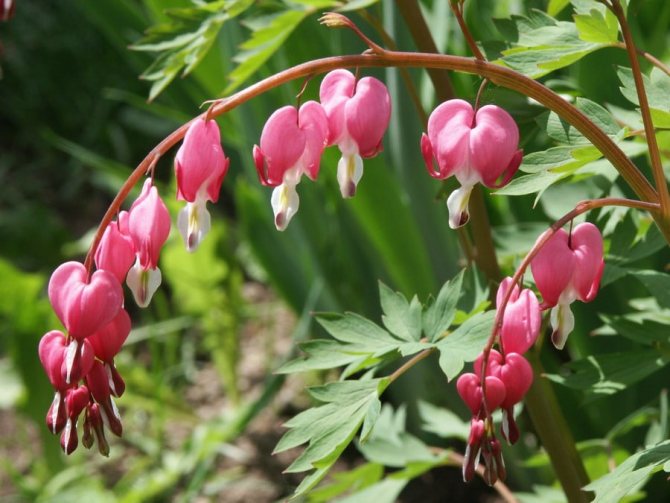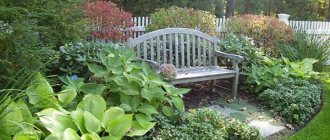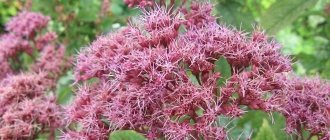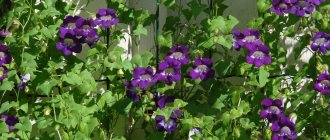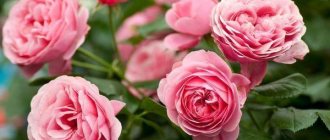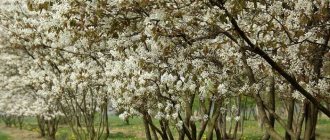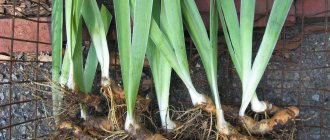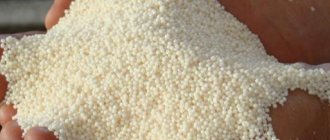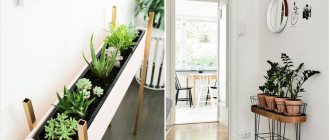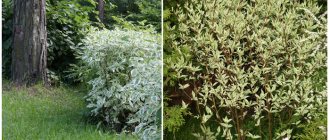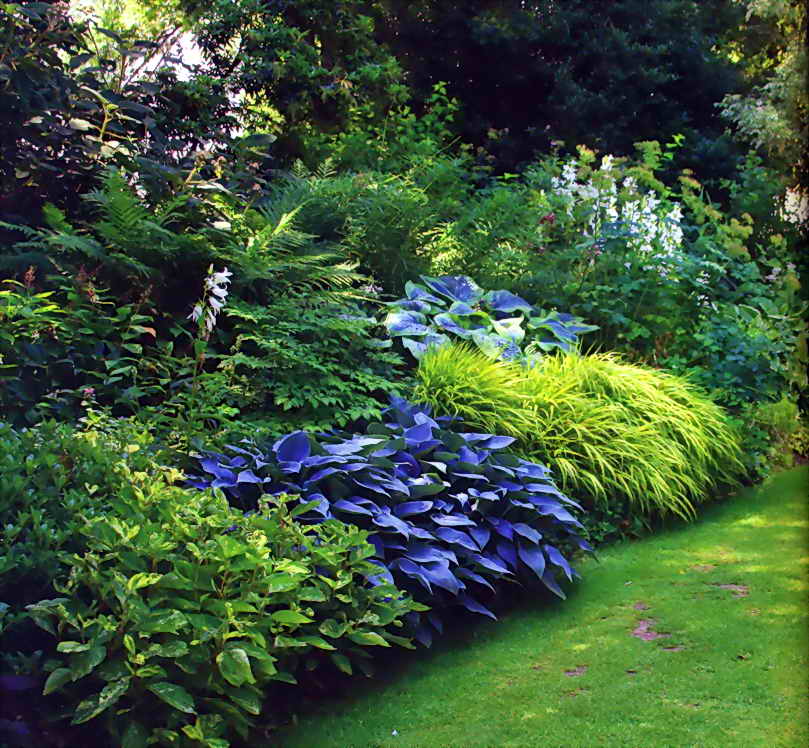
If you need to create a shady flower garden, the first step is to determine how many hours it is illuminated by the sun: the range of plants for partial shade is much wider than for shade.
It is also very important to determine the moisture content of the soil: for a dry shade, the assortment of plants is different than for a wet shady place. There are many shady perennials, there are those that even like to grow in such places - these are hosts, ferns, rogers, arizema, mountain goats, sedges, hellebores, crows, martagon lilies ...
This list can be continued for a long time.
When sunlight is in short supply, other conditions for plant growth should be as favorable as possible: it is important to carefully destroy weeds and create the best soil and hydrological conditions for perennials, for which you should carefully cultivate the soil, that is, add fertile soil and close it shallowly at some distance from trees and shrubs. Apply mineral fertilizers carefully, it is better to add rotted manure or compost. It is good to add humus, compost or clay fertile soil to sandy soils, and sand and peat to heavy clay.
In conditions of the shade, there are some conifers safely - tuevik and dwarf Canadian hemlock, some junipers, fir and herringbone trees. The assortment of deciduous shrubs is extensive, these are derain, elderberry, mock orange, hawthorn and a number of others.
Shade-tolerant and shade-loving trees
Only a small number of trees can be planted between the house and the fence, that is, where there is the least amount of sunlight. It is difficult to grow and develop well in such conditions. However, there are tree species that will brighten up the shaded corner of your property. A little patience with this and you will know which trees to plant along the fence to improve the look of the entire estate.
Although most conifers prefer sunny, open areas, there are specimens for planting in front of a house or fence, where there is little sun. From the street side, such shade-tolerant conifers are most often planted, such as:
- Yew pointed "Nana". This compact tree will feel great in areas that are illuminated by the sun for a very short time. Small dimensions (height - up to 90 cm, crown diameter - from 0 to 90 cm) allow planting this yew variety in front of the house from the street side, as well as between the house and the fence. Yew Nana grows slowly, preferring moist, loose soil. It is great if the snow cover is very high in the region in winter.
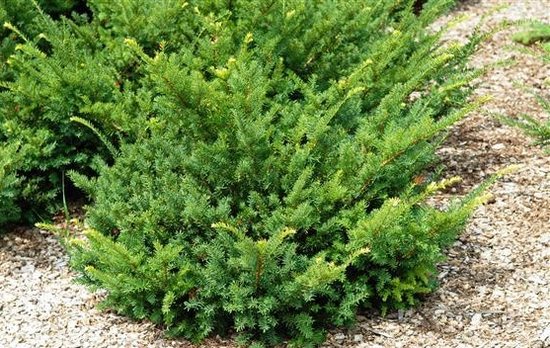

Yew pointed "Nana"
- Siberian fir. The shade-tolerant plant thrives in the northern regions of our country, where it is widely used by landscape design specialists. It grows slowly until the age of ten. The decorative effect of this variety of fir is especially evident in the spring, when young cones have a purple hue, and male oval inflorescences are brownish-red or yellow with a red bloom. Siberian fir can grow well in sunny places. Therefore, it can be used to decorate the corner where during the day the sun is replaced by a shadow.
Siberian fir
- Viburnum ordinary. This woody flowering plant thrives in shade. Low-growing trees reach a height of no more than 90 cm. Kalina can be planted as a hedge in front of the house from the street side, replacing the usual fence.
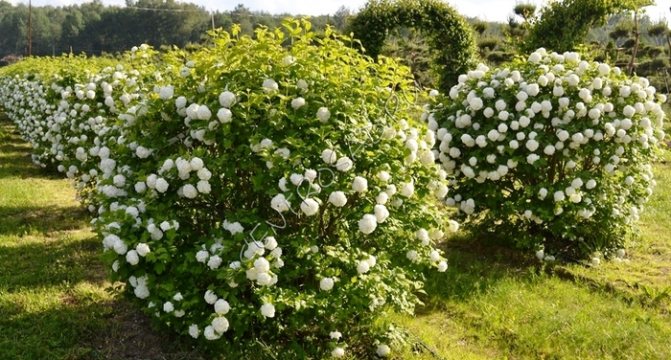

Viburnum ordinary grade "Roseum"
- Rowan. The trees, decorated with clusters of brightly colored umbrellas with berries, are unpretentious to growing conditions. With their help, beautiful contrasting compositions are created. Rowan can be safely planted in a corner where other plants do not take root well.
Determine the degree of shading of areas for planting
Any summer cottage is a plot with the presence of several zones, where places with a sufficient amount of sunlight and shaded corners are located in a certain ratio. Amateur gardeners begin to think about what to plant in the shade of their summer cottage at the moment when they have a desire to use all useful places for growing flowers and vegetables, trees and shrubs, including those with a lot of shade.
The shadow zones available at the summer cottage differ from each other in the degree of penetration of light and sunlight. Some areas are characterized by the complete absence of any light, others receive the sun only for a few hours during the day, and in some corners the presence of tall trees allows only diffused light to penetrate. So what can you plant in the shade under the trees if nothing wants to grow there? It turns out that there are some horticultural crops that thrive on shaded land and still boast a good harvest. I would like to dwell in more detail on how to properly organize the planting of such plants in the shade, as well as what types of flowers, vegetables and garden plants to give preference to.
What shrubs to plant in the shade
Gardening of the shady side on the personal plot can be carried out with the help of fruit and flowering shrubs. It is better to use species familiar to the local climate for this. The most popular shrub plants that grow well in shaded areas are:
- Hydrangea paniculata DVP Pinky. Flowering bushes can be planted in a corner where the sun's rays penetrate only in the afternoon. Flowers in the form of fluffy panicles grow very high. At the beginning of flowering, the panicles are white, and as they mature, they gradually turn pink from the base until they are completely bright pink. Single bushes will look great outside the house. They can be used to form a luxurious hedge.
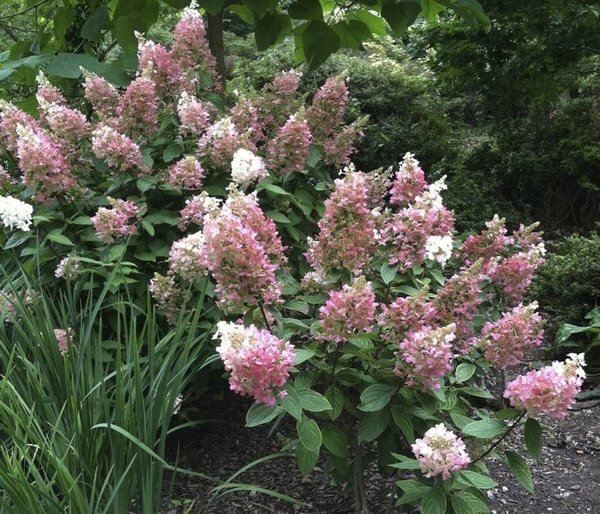

Hydrangea panicle DVP Pinky
- Black and red elderberries have excellent decorative properties. They are unpretentious in care, practically do not get sick and perfectly tolerate not only the absence of bright light, but also the harsh climatic conditions.
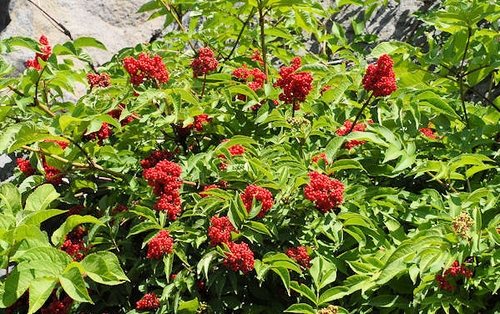

Elderberry red
- Red and black currants. In southern regions, these fruiting bushes will thrive exclusively in the shade. Currants love moisture, so it can simply die in the strong sun. In the Middle Lane, these shrubs are also better planted in shaded areas, but it is worth considering that the fruits will ripen later.
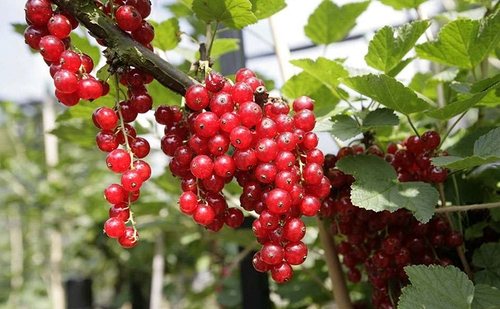

Red currant berries
- Raspberries on a dark patch of garden will give a lot of large and fragrant berries. It is quite possible to place it between the house and the fence. And the place will not remain empty, and it will be used practically.
- Irga grows in nature under the forest canopy, so this shrub will feel great in the shady area of the garden. And a seemingly useless place in the garden will turn into a productive berry conveyor.
Shrubs
Perennial shade-tolerant shrubs are the best option for decorating areas of the garden where the sun does not look. Such plants do not require weeding and special care, and some varieties, in addition to performing a decorative function, even bear fruit.
Berry bushes
Many berry bushes feel quite comfortable being placed in the shade along the fences. The soil retains moisture, and a few hours, during which the sun is in this zone, the plant is quite enough for the formation and ripening of fruits.
Barberry is very popular with gardeners. This shrub has high decorative qualities; healthy berries with an original taste also ripen on it. It multiplies easily, is unpretentious in care, tolerates a haircut well. A deaf shade for barberry is not recommended - the color of the leaf will become uniform and pale. In the southern regions, the shrub hibernates without loss, but in regions with a cool climate (including the Leningrad and Moscow regions), it is better to cover young plants, otherwise there is a high risk of freezing of the upper part of the shoots.
Barberry is not particularly picky about the acidity of the soil, but if it is too high when planting, it is better to add ash (about 100 g per bush). To create a hedge along the fence, plants are planted in a trench (2 bushes per 1 m).
Gooseberry is a versatile shrub for any area, and with good care and feeding, it not only gives sweet fruits, but also looks attractive. The plant tolerates shade well, but for the prevention of fungal diseases, it is recommended to carry out periodic treatments: in spring and autumn with copper sulfate, and during the summer with "Fitosporin".
The decoration of the shady places of the garden not only in summer, but also in winter will be a snowberry. White large fruits (false berries) of this shrub remain on the branches for a very long time. In care it is completely unpretentious, winter-hardy.
Berry bushes such as irga, viburnum, honeysuckle and black chokeberry also tolerate shade well. And black currant does not like the scorching sun at all, so the places where it appears for only a few hours are the most optimal for it.
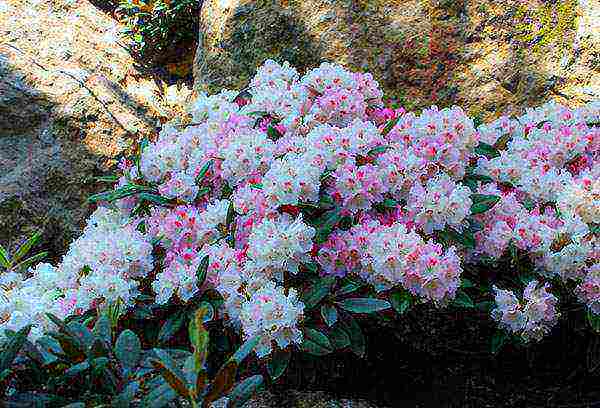

Flowering shrubs
One of the few plants that blooms and thrives in the shade is the rhododendron, the “rose tree”. Perennial winter-hardy varieties are mainly planted in summer cottages. For a rhododendron, those places of the site are suitable where the sun is until 11 am and at sunset - there will be no lush flowering in full shade. Shrubs can also be placed under spreading fruit trees, their openwork shade is ideal.
Rhododendrons are comfortable on acidic soils, therefore, when planting, needles are often poured into a hole. You cannot loosen and dig up the soil under these plants, since their roots are very close to the surface. For the same reason, it is recommended to insulate the shrub for the winter, covering it with a thick layer of needles.
Advice
Withered rhododendron inflorescences should be removed. This will enhance the ornamental qualities of the plant, accelerate the setting of buds for the next year and increase their number.
Shade and garden jasmine tolerates well. The shrub needs to be shaped regularly by pruning. Jasmine is unpretentious to the quality of the soil. During flowering, it exudes an intense aroma. In shaded areas, you can also plant honeysuckle (Tatar, common, alpine), Hungarian lilac, hydrangea.
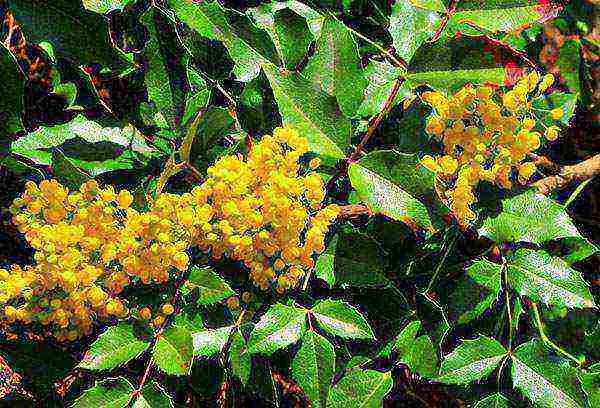

Ornamental deciduous shrubs
Many shrubs decorate the site with their foliage from spring to late autumn, without needing an abundance of sunlight.
We list the most popular of the shade-tolerant species.
- Euonymus. The plant feels great in the shade, especially the varieties "Sakhalin" and "sacred". Euonymus does not tolerate waterlogged soil.
- Magonia. It belongs to evergreen shrubs, its dense leathery leaves take on a red-brown color by winter. It blooms beautifully in spring, then forms fruits with a pronounced antibacterial effect.
- Derain (dogwood, svidina) is famous for its large number of varieties and high decorative qualities. The shrub is very unpretentious, it may well grow in the shade both near the fence and near the walls of houses, without losing color saturation. The lawn is undemanding to the soil, but it is preferable to plant it in loam with a loose structure.
- Elder.In the shade, this shrub reluctantly blooms and bears fruit, but forms a beautiful crown.
All the plants described above have many varieties, so when buying, you should choose zoned ones that are most adapted to the conditions of a particular region.
Vegetable crops
The place in front of the house is often not used in any way due to the fact that the sun does not get there most of the day. However, there are a number of vegetables that are worth growing in the front garden or near a fence on the street side. The following will help to implement the project:
- Perennial varieties of onions. A very practical option, because in addition to juicy greenery, it has decorative properties. For example, chives have huge lilac caps that attract bees.
- Beet. Shade tolerates quite well. The root vegetables will be small but sweet. But not everyone loves coarse large beets.
- Rhubarb. If it is regularly watered, then along the fence there will always be luxurious bushes of this plant.
- Ramson. In early spring, people rush into the forest to collect young and very useful wild garlic. If it grows well under trees, it means that it is quite possible to breed it on your site, where light-loving plants do not want to grow.
- Borago. Cucumber herb grows best where the sun's rays hardly penetrate. It does not need to be specially looked after, it is not afraid of spring frosts, and it is practically not susceptible to diseases and insect attacks. Having dropped her off in front of the house, you can provide yourself with the necessary vitamins.
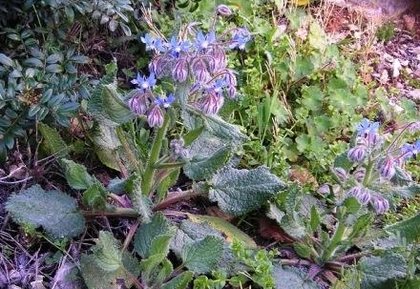

Borage herb
- Greens and herbs. Any greenery you like will do well in the shade. It is important to provide it with moisture and reserves can be made even for the winter.
- Horseradish. Spicy foliage is actively used by housewives for winter harvesting. And it grows equally well both in the sun and in shady areas.
Vegetables
Shaded areas in the garden can also be used for planting vegetables, but with the condition that the sun appears there for at least a few hours. This can be a strip along the fence, the north side of the house. Some gardeners find that a number of crops grow even better in the shade than in fully open areas. However, the quality of the soil is an important factor. It should be loose enough, fertilized and moisturized.
The following types of vegetables will do well in shady areas.
- Brussels sprouts and cauliflower. The best results are obtained when these crops are planted under apple tree crowns. It has been noticed that in partial shade, the cruciferous flea is much less attacked by the plants.
- Loves shaded areas of spinach. If the soil is fertile enough, then the bushes grow loose with strong juicy leaves, and in the sun they usually have a weak turgor, often turn yellow.
- Beet is a completely shade-tolerant plant. The root vegetables will be quite small, but sweet and of good quality. You can plant beets in the shade for the purpose of growing on tops, which contain a lot of nutrients, good in salads and soups.
- Radish and radish. These plants shoot in the sun, do not like long daylight hours, so the only chance to get juicy roots in summer is to sow vegetables in a shaded and humid place.
- Turnip prefers the same conditions as radishes.
- Jerusalem artichoke (earthen pear). Undemanding to lighting, at the same time it will decorate the site with flowering.
- Horseradish. Grows well in the shade, forming succulent large roots.
- Garlic. In shaded areas, this plant is less sick and turns yellow, but the teeth will be medium-sized.
Rhubarb feels good in the shade. If there is very little light, then its stems will be thinner and softer, but it is these that are well suited for various blanks.
Advice
You should not experiment with zucchini and cucumbers, although some claim that they grow well in the shade.In most cases, in such areas, not only does a normal harvest fail, but the plant itself turns out to be underdeveloped.
The region also plays an important role in choosing a vegetable crop for planting in the shade. In the south, melons, tomatoes and cucumbers grow quite well in such places, and in the north, plants and in open areas, even in relatively warm summers, do not always have enough sun.
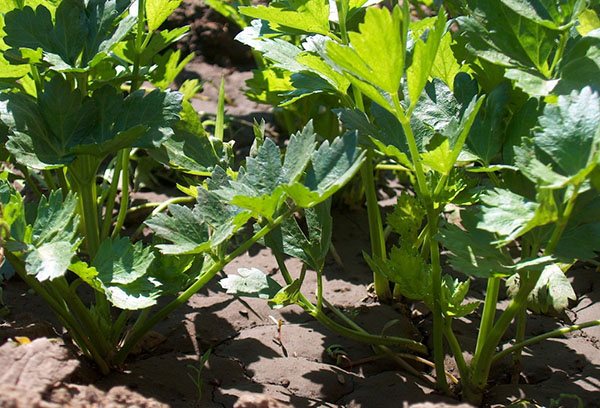

Perennials for a shady garden
It is among the perennials that most of all those that prefer areas that are closed from the sun's rays. Thanks to this variety, you can create flower beds, flower beds, mixborders and place them in the shade even from the side of the street, even from the side of the patio. Experienced gardeners especially love these plants:
- Hosta grows best away from the sun. And with good soil moisture, its foliage will be simply magnificent, which, depending on the variety, can be monochromatic or variegated. The choice is great. Hosts go well with other perennials and annuals.


Hosta on a flower bed
- Lily of the valley is a classic plant for shaded areas of the garden. Bell-shaped flowers will delight you especially in early spring, when they are especially decorative.
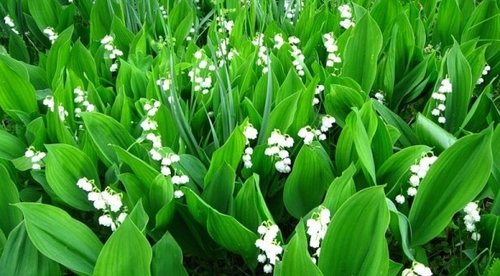

Lily of the valley silver
- Japanese Astilba "Bonn" prefers moist soils. Flowers of bright carmine color have the shape of curls. Astilba needs shade in the afternoon.
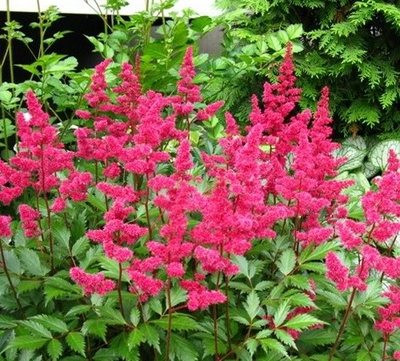

Astilba Japanese grade "Bonn"
- The meadowsweet will fill the most seemingly lifeless areas with summer aromas. Flowers of the "Nana" variety delight the eye with a deep pink shade. The meadowsweet prefers moist, well-drained soil.
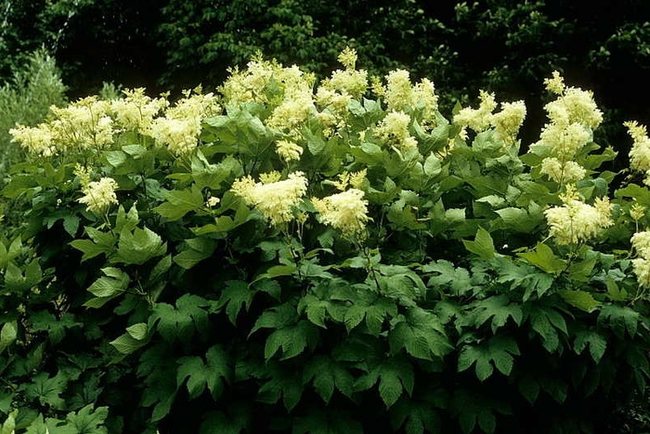

Hand-shaped meadowsweet
- Brunner perfectly tolerates any degree of shading. It is worth considering that it grows very quickly. Therefore, it is better to plant it in places that require urgent and abundant landscaping.
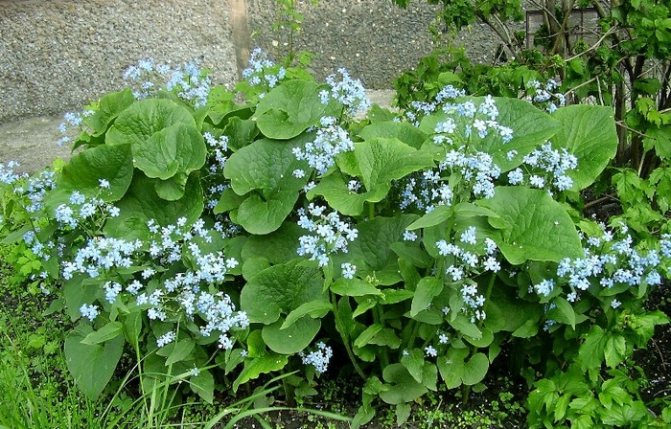

Brunera siberian
- Ferns. You simply cannot do without this plant in the shady garden. It goes well with other types of plants. Prefers moist soil.
Preparing the soil for arranging a flower garden
In order for a flowerbed in the shade to be no worse than a beautiful luxurious flower garden located in the sun, it is necessary to correctly arrange the plants, and the most important thing to do is to choose such seedlings that can grow well and please the eye all summer long without bathing in the rays sun, but located under the shadows.
If you break a flower garden under the crown of trees or shrubs, then you need to take into account that the earth here is dry, and there are many different roots in it. To plant the plants, you need to dig deeper holes than usual. These pits are filled with fertilizer, which consists of 2 parts of humus of old leaves, one part of fertilizer and sand and 0.5 of peat.
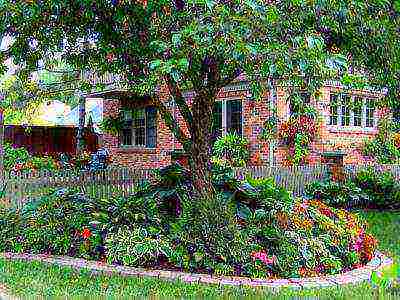

If the soil is clayey, then you need to take more sand. But if the soil is sandy, then it is better to replace peat with compost. Plant roots do not always grow vertically, some of them grow in the upper part of the soil, so it is better to break a flower bed under trees no higher than 6 meters in height.
Everyone loves to hide from the sun in summer to relax and unwind. I would like to refine and decorate this corner for relaxation with flowers. Is it possible to turn a darkened area of the site into a luxurious flower garden or a beautiful floral border?
If there are trees here, then you can start equipping a flower garden in their shade. It should turn out very beautiful: gorgeous flowers that look great against the background of branchy trees. Before starting the arrangement of the flower beds, you can draw up a plan in which to determine where and what will be planted. It is better to select plants with small and not very overgrowing roots.
To choose the right flowers, you need to find out how quickly they develop, when they begin to bloom, whether they are resistant to coolness and drought, in which soil the flowers grow best and to what size they grow.
It is best to see how these plants look at the age of three, and the bushes at the age of five. This is the age of their maturity. If you know such features, then it will be easier to make a flower bed so that it looks great whole and pleases the inhabitants of the house.
Popular biennials for shaded areas
If you do not plan to admire the same picture all the time, but you often don’t want to transplant plants either, you can stop at biennial plants that grow quite well without an abundance of sunlight.
Pansies are best suited for this purpose. In different varieties of this plant, flowers have bright, juicy shades. If you sow several varieties at once, then you can achieve their flowering throughout the warm season.
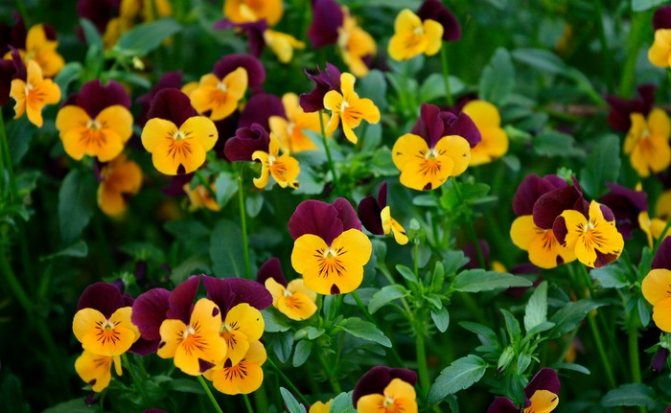

Pansies (tricolor violet)
A whole carpet can be created from delicate forget-me-nots. They scatter on their own and grow beautifully without sunlight. And the flowers of a blue hue are pleasantly pleasing to the eye.
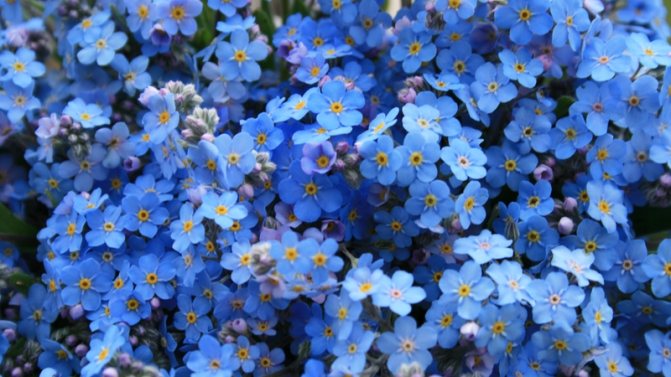

Beautiful carpet of forget-me-nots
Foxglove thrives in the shade of a fence, house, or trees. But it will delight with its decorativeness only if agrotechnical rules are observed.
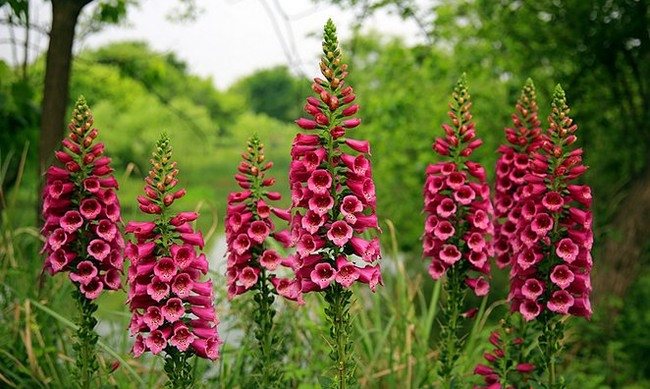

Foxglove (digitalis)
Shade-loving flowers
Flowers that like to grow under trees are great because they don't need replanting. And weeds do not grow next to them. As a rule, these are perennial plants that do not need to be watered often and much.
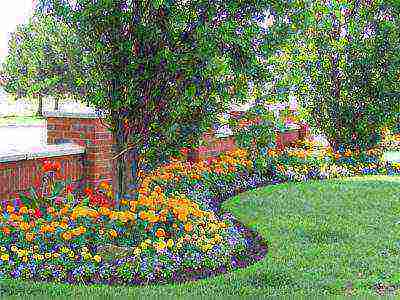

Flowers under the trees decorate the site wonderfully and naturally. They even make the shady areas of the flower garden much lighter.
First you need to determine which plants will grow under the trees and find out what degree of shade in each area. It also depends on the height of the tree, the density of the crown, the size of the leaves. It can be light, partial shade, thick and dense. The level of shade also depends on the time of day.
In the western part, you can plant seedlings that tolerate slight darkening well, and the most hardy flowers can be planted under the crowns. In such conditions, there is a special microclimate, where soil and air moisture is very high. These factors are very favorable for the growth of stilba, volzhanka and geranium. A little further, you can plant a hellebore and an oak anemone.
Hosts grow remarkably on moist soils, their species diversity is in the thousands. This plant is perennial and very shade-loving. The host is used in various flower arrangements. This flower has large and decorative leaves, they differ in shape and in different shades. Hosta flowers are very beautiful, there are a lot of them, but the flower needs to be fed periodically. (fig. 1)
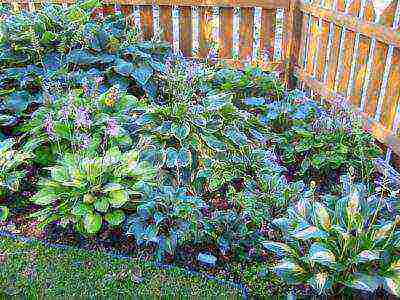

What annuals to plant in the shade
Among annual plants, there are not so many representatives that can put up with the lack of sunlight. For this purpose, you can use:
- Balsam. It will grow well in partial shade. In the complete absence of the sun with flowers, it will not please you.
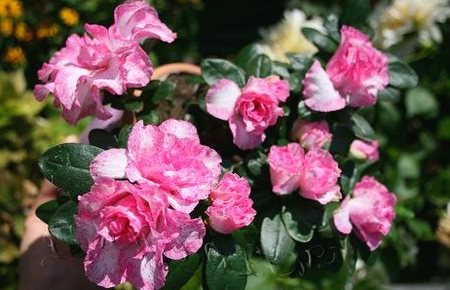

Waller's balsam
- Fragrant tobacco is a luxurious plant that will best reveal all its decorative properties in diffused light. It can be placed between saplings.
- Ever-flowering begonia looks beautiful in shaded flower beds and in single plantings.
Selection of early spring and summer breeds
Lily of the valley is a beautiful and fragrant flower that grows very well under trees. A thin stem is hidden under wide leaves, and there are many white bells on it. This flower begins to bloom in May and intoxicates with a pleasant scent. Even when it stops blooming, the bright green leaves delight the eye for a long time. (fig. 2)
During this period, you can safely plant different varieties of geraniums on the flower bed. It is distinguished by bright and pale blue and pink flowers and a beautiful leaf shape. Geraniums have a large variety of varieties that are not afraid of shade. They can also be grown at home. (fig. 3)
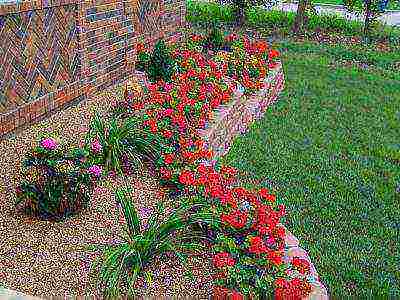

The background of the flower bed will be very decorated with a pink or crimson foxglove. After a year, she herself grows very strongly with seeds. (Fig. 4)
In the middle of the flower garden, very beautiful ferns will look good, such as the ostrich, the male dwarf and the stately chitus.
And to the shade-loving conifers, you can safely attribute the decorative juniper and ordinary spruce. (fig. 5)
Hyacinth is very beautiful and grows normally under trees. This plant is perennial and unpretentious, can grow in the shade, and does not need special care. In spring, hyacinth begins to bloom, and it has a huge range of shades from white to purple. However, it is very poisonous and should not be handled.
Rhododendron is an evergreen and looks great in the shade of trees. But it only grows on acidic fertile soil and loves moisture. Rhododendron is in great harmony with mountain ash, pine and viburnum. (fig. 6)
In spring, the violet blooms very gorgeous, and it does not need a lot of sun at all.
For this period, you can pick up a huge variety of colors. On the backyard, you can plant a monumental peony, it has gorgeous flowers that are also suitable for a garden.
For the second half of summer, an ostrich fender astilbe with chic pink panicles is suitable. Rogersia can delight you with beautiful pink blooms throughout the summer, and Heucher will revive with pearl flowers.
You can decorate the flower garden with a maria root, its flowers are red, and they will fit well into the color scheme of the flower bed. The speckled beetle has original heart-shaped leaves with jagged edges. And luxurious inflorescences weave along the ground, in the form of a carpet. Lamb produces pink flowers and decorative triangular leaves with a silvery bloom, their color changes from lighting.
Large platycodon bells look up and are shrouded in bluish jagged leaves, decorate the flower garden.
To make the flower bed original, you can alternate plants with foliage decorated with vertical and horizontal lines. So a good combination will be made by geraniums and rogers planted nearby, which have very variegated and bright leaves.
The question of decorating a flower bed in the shade can be solved very simply if you correctly approach the choice of plants, based on the peculiarities of caring for them and guided by your own preferences.
On a note
Before choosing plants for the shady zone of the garden, the corner of a house or a line along a blind fence, you need to assess the degree of illumination of the site according to the following indicators:
- Penumbra is a place where the sun's rays fall in the morning or evening and illuminate the area for only 4-6 hours
- Shade - areas illuminated from 1 to 4 hours, or received by diffused sunlight
- Deep shadow - a place where sunlight penetrates for only 1 hour, or does not get there at all
Having decided on the degree of illumination of the site, you can begin to study plants that prefer to grow in the shade, or simply tolerate it well. In other words, the choice must be made between shade-loving and shade-tolerant representatives of the flora. A little patience, and even the most neglected areas of the garden and a piece of the street in front of the house will become a real paradise!
General rules for planting in a small area
- Fruit trees are placed along the fence along the perimeter of the site.
- Shrubs are planted in rows in the center of the site, thereby delimiting it into zones.
- For vegetables and flowers, the remaining free places are chosen, taking into account which of them are shade-loving and which ones prefer the sun's rays.
- Shade-loving vegetables, as a rule, compensate for the lack of sun by increased requirements for the composition of the soil and its moisture. Therefore, they must be regularly watered and fed, especially during the ripening period.
Wet shadow
Such zones arise where there are no obstacles to the ingress of precipitation, and the soil has moisture retention qualities. It is quite easy to work with such an area, there are many suitable plants to fill it.The advantages of such a flower garden include the fact that it is better than in sunny areas, moisture is provided at the roots of plants during dry periods, as well as the fact that it is less overgrown with weeds. However, wet shade also has its drawbacks: it creates an excellent environment for the development of fungal infections and the destructive activity of slugs and snails.
Rules for building a shadow flower bed
Since the main part of shade-tolerant plants does not have bright inflorescences, the main emphasis when placing them in flower beds should be on the size and shape of the bushes. The basic rule of landscape combinations is: horizontal lines should be adjacent to vertical ones. That is, the wide large leaves of some plants are well combined with high peduncles and long stems of others.
For example, broad-leaved hosts and heucheras during the flowering period can become spectacular neighbors in a flower garden. The gaps between them are filled with shade-tolerant ground cover: periwinkle, ungulate, creeping tenacious - they will create a wide horizontal line in the lower tier of the flower garden.
A flower bed under linden trees - a composition for an openwork shade
A loose shade under linden trees makes it possible to build a composition of decorative deciduous and flowering shade-tolerant plants. This flower bed will be decorative all summer long, until late autumn. If we supplement it with spring ephemera (lilies of the valley, muscari, crocuses, hyacinths), then it will be painted with bright colors in early spring.
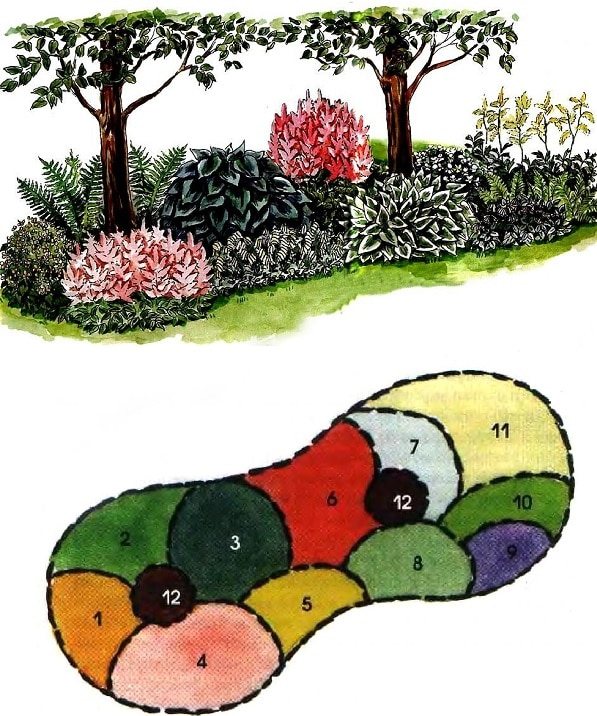

A flower bed under the trees: 1 - multi-colored mountain goat, 2 - female cochidian, 3 - hosta, 4 - Arends' astilba, 5 - yellow corydalis, 6 - Chinese astilbe, 7 - viola, 8 - wavy hosta, 9 - lungwort, 10 - telipteris, 11 - volzhanka, 12 - linden
Triangular flower bed in the shade
A multi-tiered flower bed of an interesting shape will fill the problematic shady area between buildings or trees. In the composition, the tall Volzhanka dioecious, bordered by two ferns (ostriches), emphasizes the beauty of small inflorescences of Brunner, garden geranium and Astrantia.
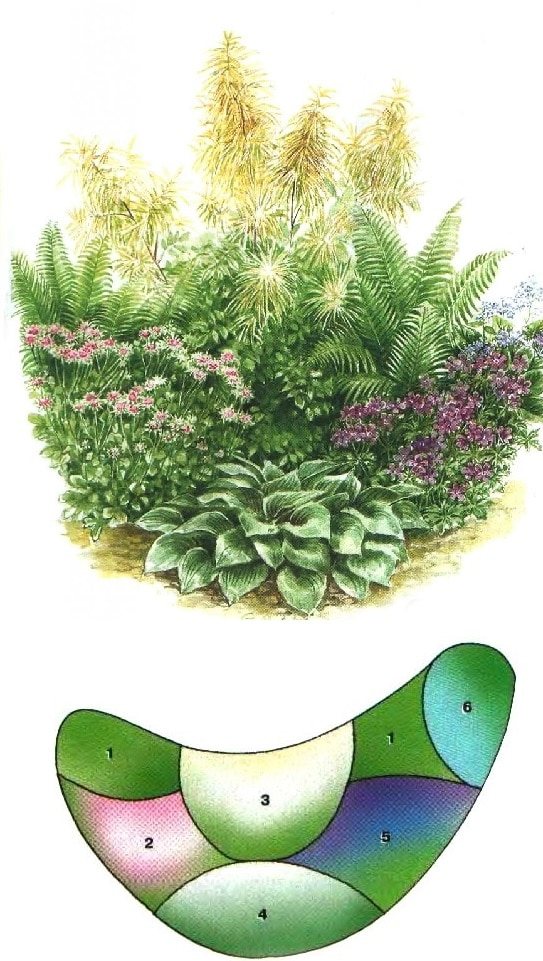

Triangular flower bed: 1 - ostrich, 2 - astrantia, 3 - volzhanka, 4 - hosta, 5 - flat-leaved geranium, 6 - brunner
A flower bed of shade-loving perennials
This shade-loving flower bed consists entirely of decorative deciduous unpretentious perennials. Even in deep shade, in the depths of a garden or under dense trees, it will not lose its decorative effect. However, in especially problematic shadow areas of the host, the wavy can lose its white border.
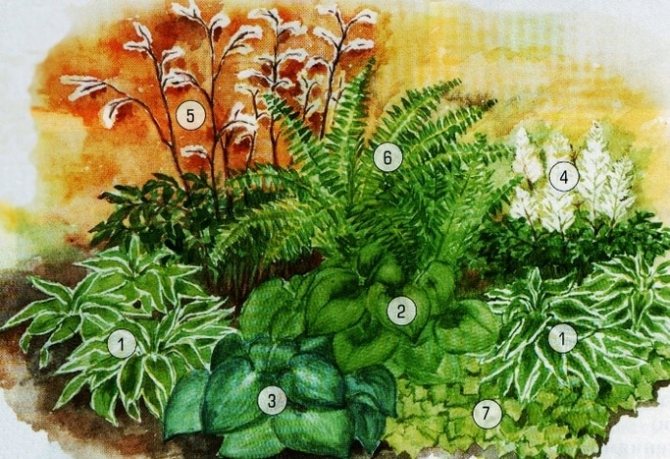

A flower bed in the shade: 1 - wavy hosta, 2 - swollen hosta, 3 - Siebold hosta, 4 - astilbe, 5 - black cohosh spreading, 6 - fern (ostrich), 7 - heart-leaved thiarella
Flower bed for partial shade
An effective composition could be planted in the shade, if not for the bright bush of daylilies - they need at least 5-6 hours of direct sunlight to bloom. Remove daylilies from the scheme and you can safely place the flower bed in the darkest parts of the garden.
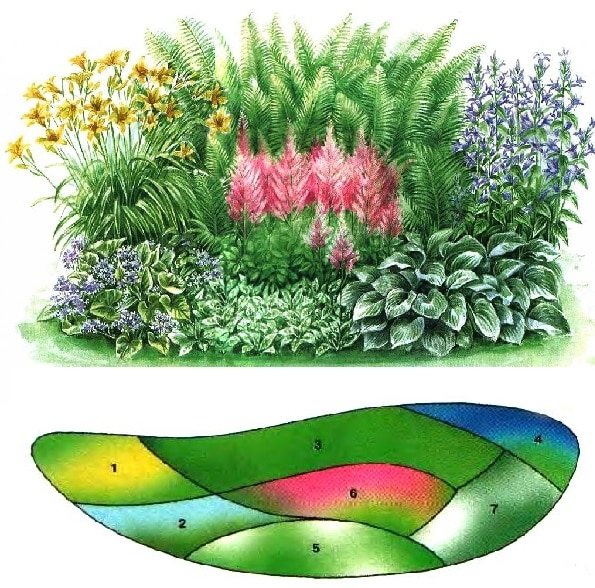

Flowerbed for penumbra: 1 - daylily, 2 - brunner, 3 - ostrich, 4 - broadleaf bell, 5 - lungwort, 6 - astilba, 7 - hosta Siebold
Best plants for dry shade
Perennials:
- Aquilegia (catchment)
- Aconite (wrestler) Fischer
- Autumn anemones
- Asperula (woodruff) *
- Badan (bergenia)
- Basilist
- Heuchera
- Geranium
- Goryanka
- Dicentra (broken heart)
- Tenacious creeping
- Iris fetid
- Clefthoof
- Crocosmia (montbrecia) *
- Lily of the valley
- Lunnik
- Cuff
- Lungwort
- Fragrant Mirris
- Almond spurge
- Hellebores (helleborus)
- Digitalis (digitalis)
- Forget-me-nots
- Comfrey
- Sedge, grass and other cereals *
- Spring primroses and common primroses
- Hosta
- Woolly chisel
- Lamb
Shrubs:
- Daphne (daphne)
- Gaultria (pernettia) pointed
- Action
- Japanese keria
- Magonia holly and creeping
- Sarcococcus
Spring bulbous:
- Anemone
- Hyacinth
- Hyacintoid
- Kandyk
- Muscari
- Narcissus
- Snowdrop
- Scilla
Autumn bulbous:
- Colchicum *
- Liriope
- Cyclamen neapolitan

